Creek Mouth Shoals Provide Key Habitat During a Cold May
One of a Series of Updates on the 20th Year of the Delaware Bay Shorebird Project
by Dr. Larry Niles, LJ Niles Associates LLC
In spite of the very spotty horseshoe crab spawn, the shorebirds on Delaware Bay seem to be gaining weight on schedule. Below you will find a graph composed of the average weights of all the red knots by our team for the last 20 years. The curve is the result of combining all the data we collected and shows the sweet spot for most knots. As they arrive, they take time to gain weight but after about 5 days they start gaining weight rapidly. After the 26th or so, birds start reaching the critical weights necessary to safely reach the Arctic breeding grounds. One can see the curve deep at the end of the month because fat birds fly off leaving the less fat behind. In general, weights above the line are good, below the line not good. The large squares on the graph are the average weight of this year. So far, so good.
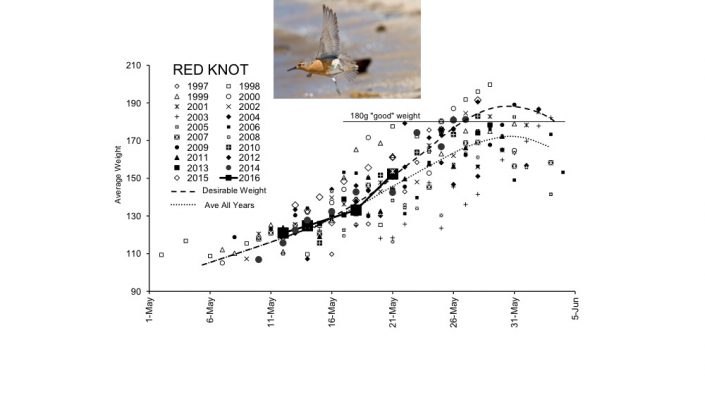

This is a bit of a surprise for the team. The weather here on Delaware Bay is wet and cold. The water temperature struggles to lift above 59 degrees, the temperature necessary for a crab to spawn on Delaware Bay. So far, the temperature has been below 59 degrees more than above. We had good spawns in the last few days, but only in key places.
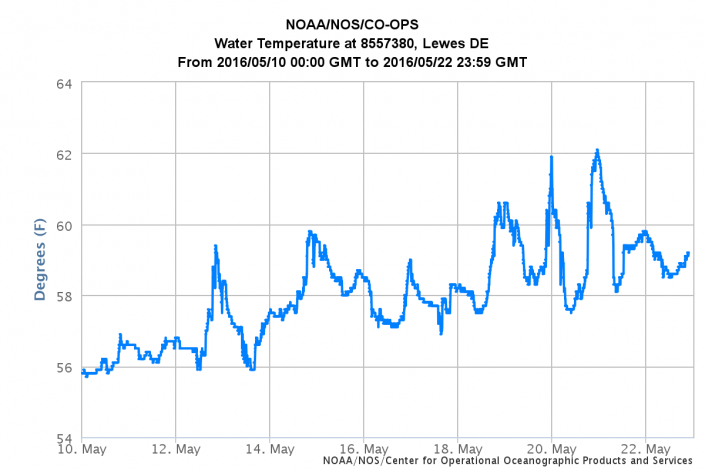
A key place for horseshoe crab spawn happens to be the mouths of small creeks. The New Jersey side of Delaware Bay is blessed with many small intertidal creeks, most draining only marsh or small inland watersheds. Some of these creeks have names, Goshen Creek, West Creek, Nantuxent Creek, but many do not. Almost all have shoals at their mouth with the bay because bay currents, tidal flow and wind driven waves act against each other to settle sand coming from adjacent beaches or from inside the creek drainage. Much of the sand lost from our restored beaches settles into these shoals. For horseshoe crabs, these shoals are sweet places.
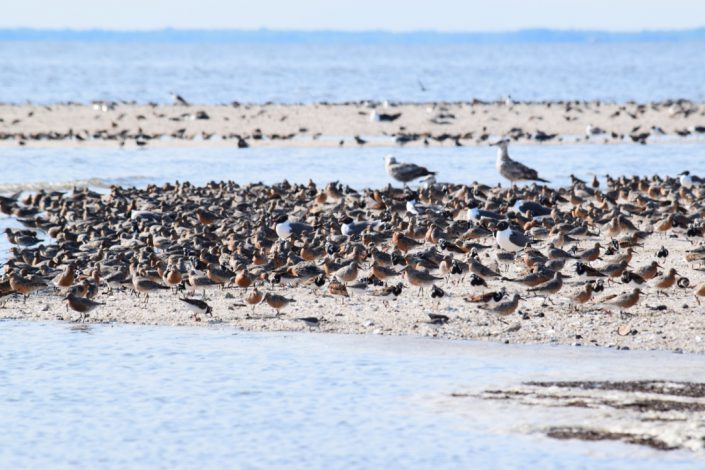
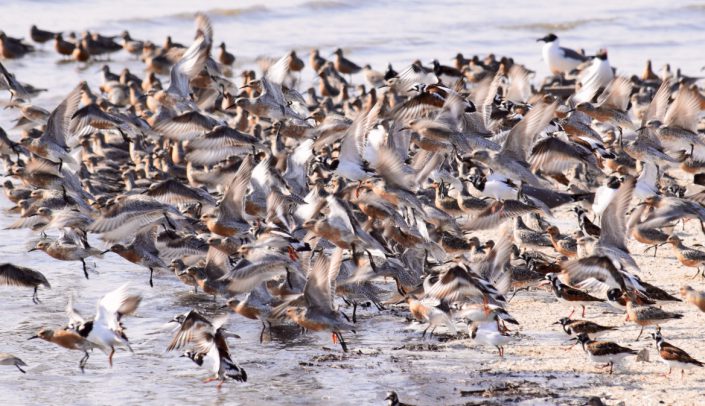

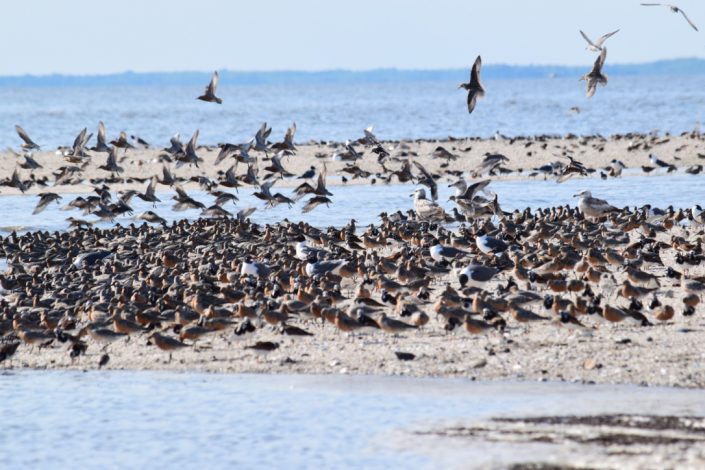
Usually, the shoals lie just under the high tide line and are composed of large grain sand, the optimal conditions for a good crab spawn. However, the most important characteristic and key to this unusually cold May, is the warming water flowing out from the marsh drainages. On a flooding tide, colder warmer flows into the vast marshes of the Delaware Bay. This warms the water. On an ebbing tide, it flows out the creek and over the shoals, making them slightly warmer and more conducive to inducing crabs to spawn. Even on these cold days, they literally climb over themselves to breed on the shoals. The shoals also protect the inner mouths of the creeks thus making the sandy shores at the mouth of the creek a crab spawning heaven.

However, as it seems usual with this blog, there is a growing concern. Right now, most of the red knot population on the bay is feeding on these shoals along with thousands of other species, but only half have arrived from southern wintering areas. We now have about 12,000 red knots on the bay and in a day or two we should find another 12,000 falling from the sky. Will there be enough eggs? Will the water temperature finally reach normal levels? These are the important question for the next few days.
Learn More:
- Conserve Wildlife Foundation’s Delaware Bay Shorebird Project
- Conserve Wildlife Foundation’s online field guide: Red Knot
Dr. Larry Niles has led efforts to protect red knots and horseshoe crabs for over 30 years.
Leave a Comment
Thank you for continuing this valuable research. I will pass this information on to students who spend time with us at th4e Sedge Island natural Resource Education Center. Please let me know if there is anything we can do to help. Jim Merritt
Thank you for continuing this valuable research. I will use the information in our education programs at Sedge Island Natural Resource Education Center. If there is anything we can do to help, please let me know. Jim Merritt
Comments are closed.